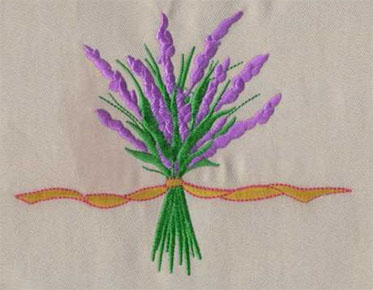Tips to Sew with Stretch Fabric | Eagle Digitizing
Sewing with stretch fabrics can be both
exciting and challenging. These fabrics are popular for garment making due to
their comfort and ability to move with your body. However, if you're new to
working with stretch fabrics, it's important to learn some essential tips and
tricks to make your sewing experience smoother and more successful. In this
comprehensive guide from Eagle Digitizing, we'll share valuable insights and techniques to help you master
the art of sewing with stretch fabrics.
Before you even start sewing, it's crucial to familiarize yourself with the specific stretch fabric you'll be working with. Stretch fabrics come in various types, such as cotton spandex, fleece, or blended materials. Take the time to feel the fabric and notice if it stretches more in one direction than the other. This information will guide you when it comes to cutting your pattern and determining the desired amount of stretch in different areas. Additionally, we highly recommend washing the fabric before use to prevent any potential shrinkage later on.
When it's time to cut out your pattern pieces,
handle the fabric with care to avoid stretching it unintentionally. Some
knitted jerseys have a tendency to curl at the edges, but you can easily
flatten them by using a starch spray and pressing them before cutting.
Selecting the right needle and thread is vital
for achieving excellent results when sewing stretch fabrics. Opt for a
polyester thread specifically designed for clothing construction, such as the
recommended 40-weight thread called "designer." This type of thread
is not only strong but also offers a slight amount of stretch, making it ideal
for working with stretchy fabrics. On the other hand, avoid using cotton
threads, as they lack the necessary elasticity and may break when the fabric is
pulled.
Equally important is choosing the appropriate needle. A ballpoint needle with a rounded tip is perfect for sewing stretch fabrics. The rounded tip helps the needle glide smoothly through the fabric without causing any damage. If you're working with lightweight or tightly woven fabrics, consider using a stretch needle with a more finely pointed tip to navigate between the fabric's weave more easily and prevent skipped stitches.
When it comes to stitching, employing a narrow
zigzag stitch on your sewing machine is
highly recommended. The zigzag stitch allows the fabric to stretch and retract
alongside the thread, ensuring flexibility and durability in your seams.
Increase the stitch length slightly to a 2.5 to 3 millimeter setting to
facilitate the fabric's stretchability. To achieve the best results, remember
to sew slowly and avoid pushing or pulling the fabric, as this can distort the
final outcome.
If you encounter difficulties with the fabric
feeding smoothly through your machine, try placing a piece of tissue paper
under it. The tissue paper adds a bit of friction, aiding in the proper
movement of the fabric. Once you've completed sewing, the tissue paper can be
easily torn away without leaving any residue.
For those who own a cover stitch machine or serger with cover stitch capabilities, you have the advantage of achieving professional-looking results. The cover stitch allows the fabric to maintain a high level of stretch while providing a secure and aesthetically pleasing finish. It's particularly useful for hems on sleeves, pants, and collars, ensuring longevity and comfort in your garments.
To enhance the finesse of your projects,
consider using a woolly poly thread on the lower chain looper of your cover
stitch machine or serger. This thread choice ensures that your fabric remains
elastic and soft against your skin. Additionally, Eagle Digitizing offers custom digitizing services, providing
high-quality embroidery designs tailored to your specific needs. Their
expertise in digitizing can help you bring your creative visions to life with
precision and accuracy.
In conclusion, sewing with stretch fabrics
doesn't have to be intimidating. By following these tips and incorporating
Eagle Digitizing's custom embroidery digitizing services, you'll be well-equipped to tackle any stretch fabric project that
comes your way. Remember to choose the right needle and thread, utilize
appropriate stitching techniques, and handle the fabric with care. With
practice and patience, you'll achieve professional-looking results and create
stunning garments that showcase your skills and creativity.



